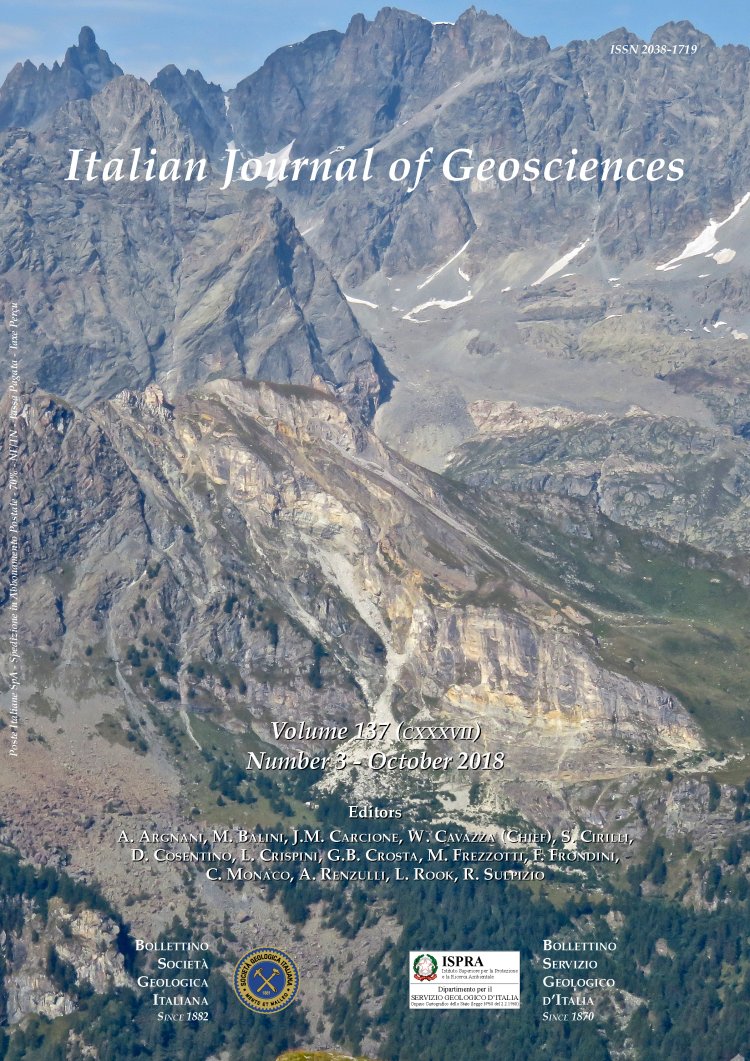
Source areas evolution in the Neogene Agost Basin (Betic Cordillera): implications for regional reconstructions
Manuel Martín-Martín (1), Francesco Guerrera (2), Francisco J. Alcalá (1) (3), Francisco Serrano (4) & Mario Tramontana (5)
(1) Departamento de Ciencias de la Tierra y Medio Ambiente, University of Alicante, Alicante, Spain.
(2) Ex-Dipartimento di Scienze della Terra, della Vita e dell’Ambiente, Università degli Studi di Urbino, Urbino, Italy.
(3) Instituto de Ciencias Químicas Aplicadas, Facultad de Ingeniería, Universidad Autónoma de Chile, Santiago, Chile.
(4) Departamento de Geología y Ecología, University of Málaga, Málaga, Spain.
(5) Dipartimento di Scienze Pure e Applicate (DiSPeA), Università degli Studi di Urbino Carlo Bo, Urbino, Italy.
Corresponding author e-mail: manuel.martin.m3@gmail.com.
DOI: https://doi.org/10.3301/IJG.2018.14
Volume: 137 (2018) f.3
Pages: 433-451
Abstract
Sedimentary and mineralogical analyses were performed in the Neogene Agost Basin (External Domain, Betic Cordillera) to reconstruct relationships between tectonics and sedimentation, and source areas evolution over time. The sedimentary analysis allowed defining two sedimentary sequences: (1) Lower Stratigraphic Unit, Serravallian p.p. and (2) Upper Stratigraphic Unit, post Lower Tortonian (Upper Miocene p.p.) separated by an angular unconformity. They consist of marine (lithofacies L-1 to L-3) and continental (lithofacies L-4 to L-8) deposits,
respectively. The analysis of mineralogical assemblages and some XRD parameters of the sedimentary sequences and older formations allowed recognizing a sedimentary evolution controlled by the activation of different source areasover time. In particular, the Ill+Kln±Sme+Chl claymineral association characterizes the supply from Triassic formations; the Ill+Kln+Sme association from Albian formations; the Sme+Ill±Kln+(I-S) and Sme+Ill±Kln associations from Upper Cretaceous p.p. formations; and the Sme+Ill±Kln+(I-S) association from Paleogene formations, testifying a tectonic mobility of the basin margins differentiated over
time. This reconstruction leads to propose detailed relationships between types of deposits and provenance and not a classic “unroofing”, as follows: (i) the lithofacies L-1 (lithofacies L-2 and L-3 were not analysed) is characterized by the Ill+Kln+Sme mineralogical association indicating an origin from the Albian formations; (ii) the lithofacies L-4 shows a mixture of Ill+Kln+Sme and Sme+Ill+Kln associations sourced
from the Albian and Upper Cretaceous formations; (iii) the lithofacies L-5 is characterized by the Sme+Ill±Kln+(I-S) association indicating a provenance from the Upper Cretaceous and Paleogene formations, and (iv) the lithofacies L-6 to L-8 are characterized by the Ill+Kln±Sme+Chl association indicating a supply mainly from Triassic deposits. The evolutionary sedimentary model reconstructed for the Agost Basin, which improves a previous contribution about the same area, has been
correlated with those reported in other intramontane Neogene basins in the Betic-Rifian Arc studied with similar resolution, this obtaining useful information for regional reconstructions.
Keywords
clay-mineral assemblages, source areas, tectonosedimentary evolution, Neogene strike-slip faulting, Betic Cordillera.
Get Full Text